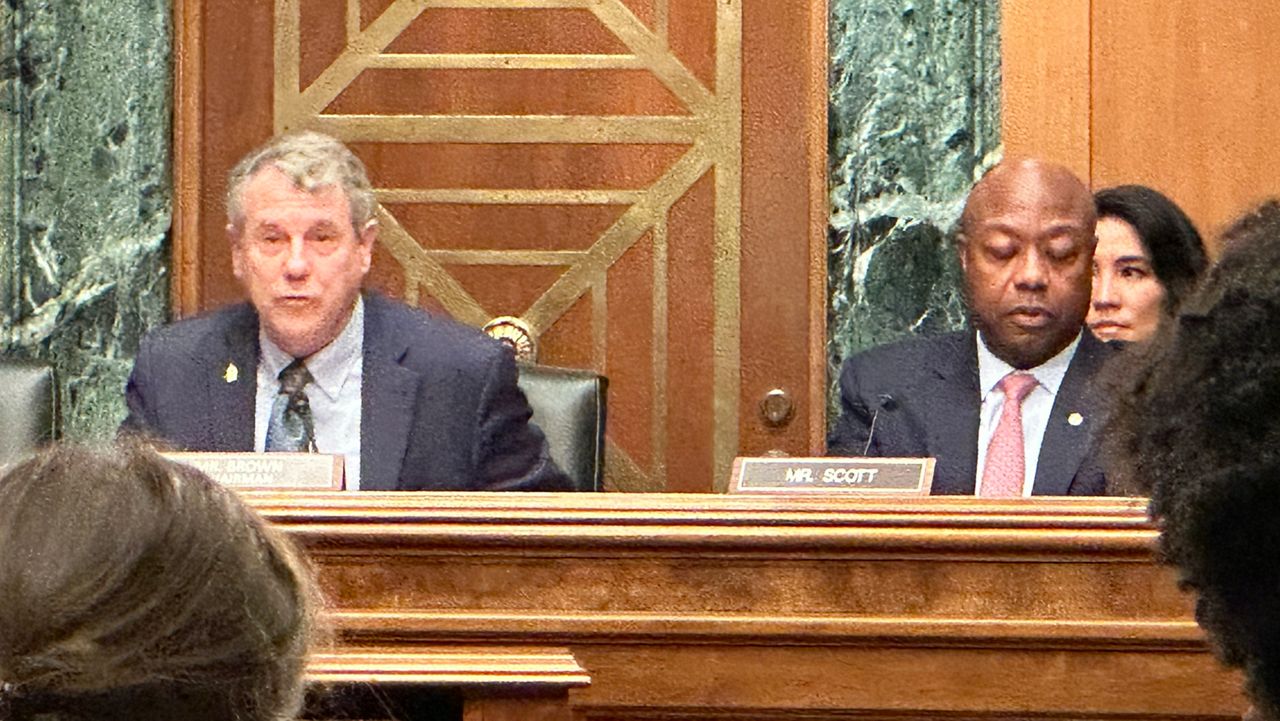WASHINGTON, D.C. — The original federal budget for 2025 included more than $13 billion in congressionally directed spending, also known as earmarks.
When Congress passed a new stopgap budget fund for the government through September, it cost Ohio $760 million for nearly 300 projects.
What You Need To Know
- When Congress passed a new stopgap budget fund for the government through September, it cost Ohio $760 million for nearly 300 projects
- Both Democrats and Republicans who requested funding for specific projects in their districts said they hoped to re-submit the same projects in the 2026 budget
- Republicans face growing pressure to skip earmarks in an effort to bring down federal spending, a pillar of President Donald Trump’s agenda
The projects slated for funding ranged from road repairs and river dredging to historic preservation and a new fire truck. Now they are all on hold.
Last month, Republicans pushed through a stopgap funding bill known as a continuing resolution to fund the government through September that excluded all earmarks.
“It’s going to have residual impacts on communities that have been awaiting these dollars,” said Rep. Shontel Brown, D-Ohio, whose Cleveland district had been slated to receive $34 million for 15 projects. “We’re talking about upgrades to the Hopkins Airport, water and sewer infrastructure in Cleveland and University Heights, and we’re talking about new police radios for the city of Cleveland.”
The amount secured by each Ohio lawmaker varied widely, from nothing to $167 million.
Both Democrats and Republicans who requested funding for specific projects in their districts said they hoped to re-submit the same projects in the 2026 budget, on which Congress is currently working.
“I encourage those who asked for it in my district last year to continue to push forward if they still feel that it’s worthwhile, and we’d like to continue that work,” said Rep. Dave Joyce, R-Ohio, whose district in northeast Ohio was set to receive $80.9 million for 30 projects. “Also, there’s going to be some new projects that have come, and we’ll weigh them all together and figure out where we stand.”
Republicans brought earmarks back in 2021 after a 10-year ban, yet some continue to blast funding for specific projects as wasteful “pork.” Two Ohio lawmakers, Rep. Jim Jordan, R-Ohio, and then-Senator JD Vance, did not make any requests for the 2025 fiscal year.
Even now Republicans face growing pressure to skip earmarks in an effort to bring down federal spending, a pillar of President Donald Trump’s agenda.
“I don’t really think right now is the time to be really going too deep into earmarks. Of course, I always want to get earmarks for my district and all the great projects that that does. But right now, we have to figure out how to quit spending all this money and increasing the debt,” said Rep. Michael Rulli, R-Ohio. “Because if we continue on this route, we’re going to basically only be paying on the interest on debt, and Social Security will be jeopardized.”
Rulli took office in June 2024, after the deadline for congressionally directed spending requests, so his district was not set to receive any earmarks.
There is a narrow window to submit a request for project funding for fiscal year 2026. The deadline has already passed for most Ohio House members, while Sens. Jon Husted and Bernie Moreno are accepting requests until mid-April.
Ohio lawmaker earmark requests for fiscal year 2025 included:
Rep. Jim Jordan |
$0 |
Sen. JD Vance |
$0 |
Rep. Warren Davdson |
$6,750,000 |
Rep. Bob Latta |
$12,056,043 |
Rep. Marcy Kaptur |
$32,969,998 |
Rep. Shontel Brown |
$34,375,703 |
Rep. Joyce Beatty |
$36,624,955 |
Rep. Emilia Sykes |
$38,123,166 |
Rep. Greg Landsman |
$38,504,051 |
Rep. Brad Wenstrup |
$39,194,658 |
Rep. Troy Balderson |
$40,702,601 |
Rep. Mike Carey |
$53,726,561 |
Rep. Dave Joyce |
$80,953,357 |
Rep. Max Miller |
$87,039,210 |
Rep. Mike Turner |
$92,050,000 |
Sen. Sherrod Brown |
$167,292,000 |












